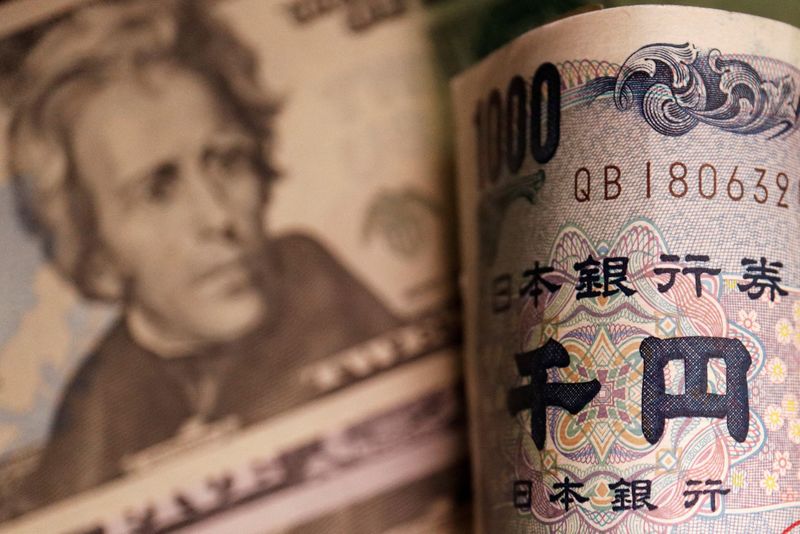By Wayne Cole
(Reuters) - A look at the day ahead in European and global markets from Wayne Cole.
A 1.6% bounce in the Nikkei has led Asian shares higher so far today as the yen skids on pretty much all the major crosses.
Since the threat of intervention has capped the dollar at 152.00 yen, investors feel safe in selling the yen against everything else. Even the Canadian dollar reached a 16-year peak versus the Japanese currency, helped in part by the recent sustained rise in oil prices.
It's not just oil. Copper has reached a 13-month peak and gold another record above $2,300 an ounce.
Copper may have been boosted by China's moves to promote auto trade-ins and scrap government-set minimum down payments for consumers financing new car purchases. Autos, particularly EVs, are big users of copper.
Gold seems to be benefiting from buying by momentum funds and commodity trading advisors (CTAs) since its clean break of $2,072 resistance. [GOL/]
There's also a sense that investors are concerned at the mountain of debt global governments are issuing, seeking to put money in assets that are limited in quantity. That may be one reason for the demand revival in cryptocurrencies like bitcoin, which, at least theoretically, are limited in supply.
The ascent of oil, if sustained, could prove a headache for central banks as it adds to inflation pressure while acting as a tax on consumers. [O/R]
OPEC+ ministers showed no inclination to increase output at their meeting on Wednesday, keeping voluntary cuts of 2.2 million barrels per day in place until at least the end of June.
That would not be welcome to the Federal Reserve given the rise in prices paid reflected in the ISM manufacturing survey this week, although that was thankfully balanced by a drop in prices in the services survey.
Fed Chair Jerome Powell chose not to rock the boat and reaffirmed rate cuts are coming if the data pans out as they expect. No less than seven Fed officials are speaking on Thursday and will no doubt have their own views on rates.
Fed fund futures still favour a June start to cuts at 62%, though that's down from 74% a month ago. The bigger shift has been in how fast and far rates are expected to fall, with roughly 73 basis points priced in for this year compared to more than 140 basis points in January.
Investors have also taken 100 basis points of easing out of 2025, so that rates are now seen ending next year around 4% rather than 3%. The recent rise in longer-term yields suggests Treasury investors clearly fear the neutral level for U.S. rates is no longer 2.5%, but 3% or higher.
Event risk ahead includes U.S. Treasury Secretary Janet Yellen's visit to China, although it's a holiday there today and Friday and news has been scant.
Yellen during her nearly weeklong trip to Guangzhou and Beijing intends to raise U.S. concerns about China's large and growing excess manufacturing capacity, particularly in new energy goods.
European final PMIs for March are not expected to diverge much from the advance readings, and producer prices are expected to show another chunky fall in February that would reinforce expectations for a June start to ECB easing.
Analysts look for a small rise in U.S. weekly jobless claims, though they can surprise from time to time.
Note ADP jobs numbers were strong enough for Goldman Sachs to raise its payrolls forecast by 25,000 to 240,000, so Friday is shaping up to be a testing session.
Key developments that could influence markets on Thursday:
- Final March PMIs for Europe, euro zone Feb PPI
- ECB releases minutes of its March meeting
- Riksbank publishes minutes from last policy meeting

- U.S. weekly jobless claims, trade balance for Feb
- Fed speakers include Patrick Harker; Thomas Barkin; Austan Goolsbee; Neel Kashkari; Loretta Mester; Alberto Musalem and Adriana Kugler
(By Wayne Cole; Editing by Tom Hogue)